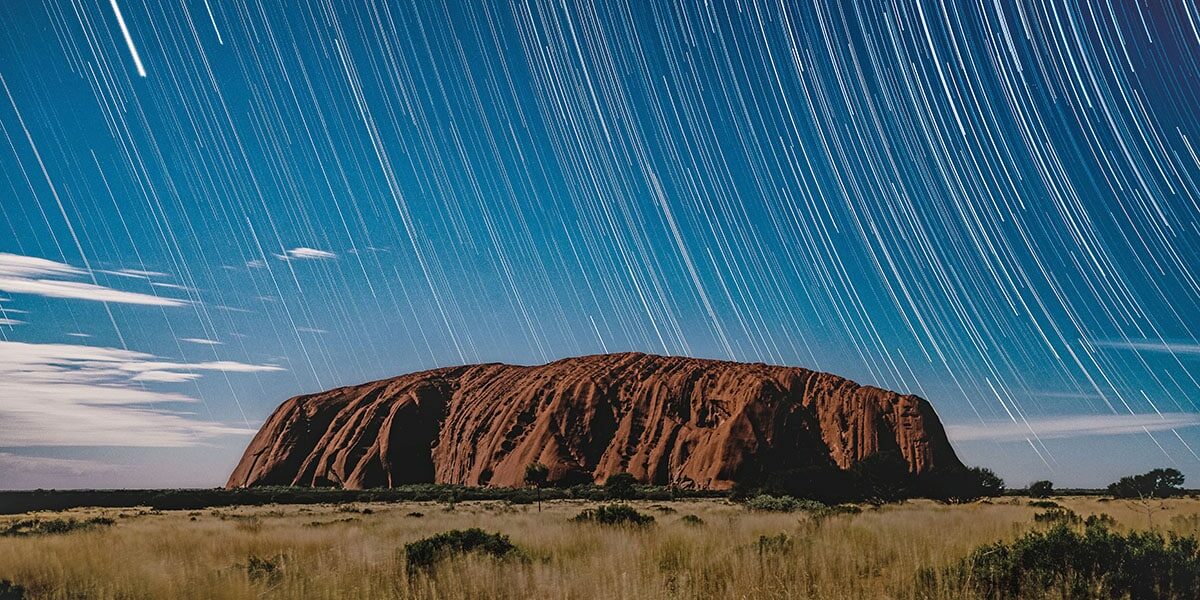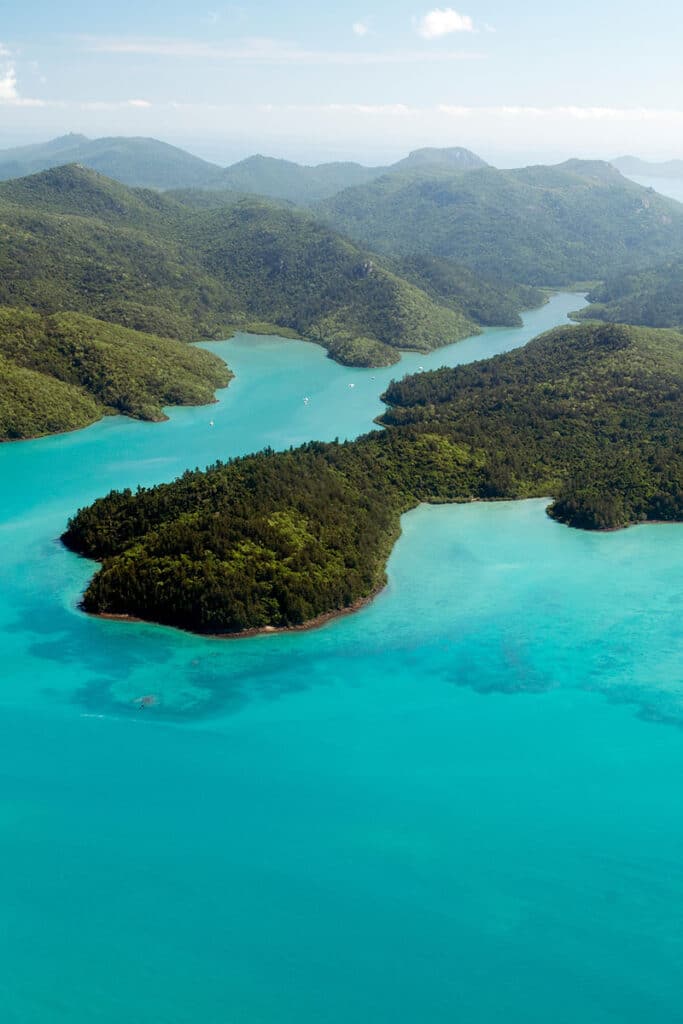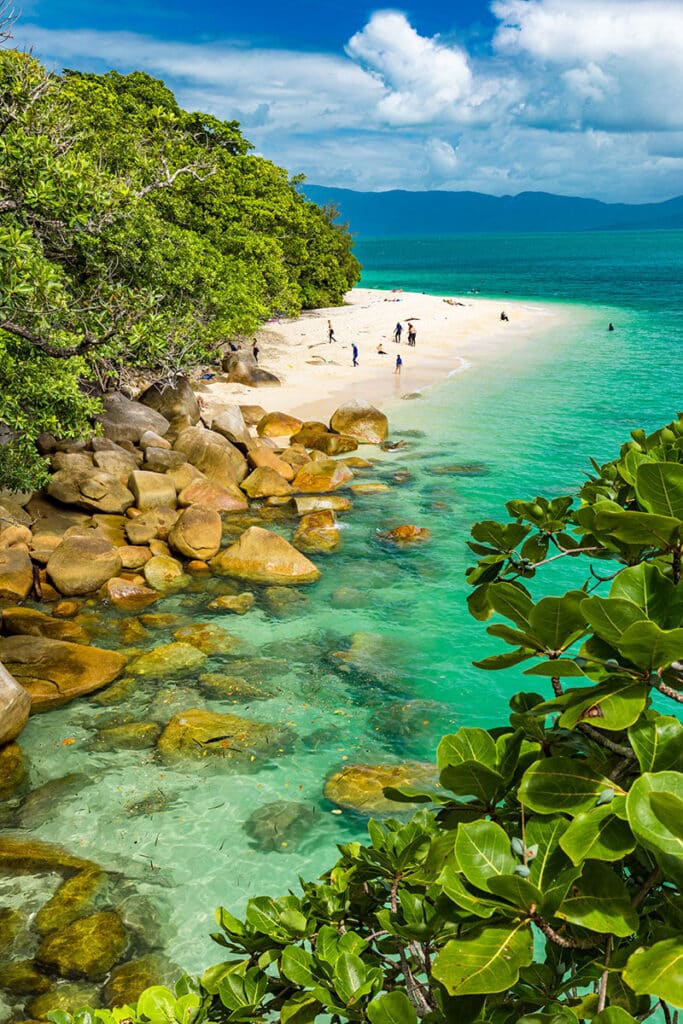HEADING DOWN-UNDER
The Best Time to Visit Australia
Australia is rapidly gaining reputation as a fascinating, diverse and highly amenable vacation destination.
With its renown for sun, sea, surf and sand, it is often thought of as a land of an endless summer, and some are unprepared for the chilly winter months. So, when is the best time to visit Australia?
When you choose to visit Australia comes as much down to your personal preference as the time of year. Similarly, whatever season may welcome you, there is a wealth of locations and experiences to explore that will avoid the most challenging aspects of the Australian climate.
Australia is absolutely a year-round destination, but your itinerary might change greatly depending on your desires and the season of your visit.
Tasmania, for example, suffers the icy blasts of the Antarctic through the colder months of May to October, but its cooler climate provides perfect hiking temperatures through the summer. Contrarilly, the northernmost regions of the nation are sweltering at the height of summer, though remain tropical and balmy throughout winter.
The world’s largest island is hugely changeable. The southern states – Tasmania, Victoria and South Australia – have a climate more akin to Europe, with the four familiar seasons distinctly delineated across the year. From about halfway northwards, roughly in line with the border between New South Wales and Queensland, the tropics take over. To the far north, the monsoonal seasons are present – hot and dry or hot and wet, but invariably hot. But in the lower regions of Queensland and northern New South Wales, there is influence from both climatic characteristics. This results in a summer and a winter with very little transition, and times of the year that may be a little wetter, but are certainly not monsoonal.
This level of diversity can make things very confusing when selecting a time of year to visit, and of course, it must never be forgotten that the calendar is backwards, the southern hemisphere seasons opposite to those on the top half of the world.

Climate is not a predictable force, and – just as anywhere else in the world – cold snaps, downpours or heat waves can appear from nowhere in Australia. The map above offers an impression of what to expect throughout the year, though more as an estimated guideline than a guarantee.
Australia as a nation doesn’t abide by the familiar seasons of more temperate climates, and any month of the year can provide superb and diverse experiences. Due to this, there essentially is no ‘right’ time to visit.
Rather, there are certain months of the year in which particular experiences or destinations are better or more beneficial than others when you visit Australia.
VISIT AUSTRALIA: By the Seasons
SPRING IN AUSTRALIA: September – November
Australia’s spring arrives at the end of the year, officially commencing in November. As the days warm across the country, a coastal migration begins, and warm, dry weekends can see inland visitors flocking to the beach. However, with over 12,000 beaches to choose from, few but the most popular stretches of sand become crowded.

Tasmania and Victoria are still distinctly on the lower end of their annual mercury scale, but the cooler days can be more appealing when taking long hikes or excursions of more exertion.
With the North – including the Daintree Rainforest, Great Barrier Reef and Uluru – entering wet season, focus is better set on the southern half of the country. Early spring can be superb in the ‘Top End’, but visit much after the beginning of October and you’ll likely discover why few venture north in the wet season.
Australia’s cultural heart of Melbourne will still be brisk, though gradually warming, while from Sydney northwards, the mercury makes a steady climb, and summer is well on the way by the end of October.
This is also the latter end of the East Coast’s humpback whale migration, and while boat trips offshore will give you a ringside seat, many of the headlands and capes make excellent vantage points for watching plumes spout and these majestic creatures leap from the depths and slap their flukes on the water’s surface.

For those more acclimated to cooler temperatures, this is often the preferred season. Pleasantly warm without being exhaustingly hot, a couple of layers of clothing are recommended, especially for cooler evenings, but shorts and t-shirts can be comfortably worn through the day.
SUMMER IN AUSTRALIA: December – February
Christmas is very different in Australia. Coinciding with the height of summer and the longest vacation from academia, many coastal towns are sustained by the influx of tourism at this time. However, selecting the right destinations will avoid the crowds yet afford balmy ocean waters, soft-sand beaches and long, warm days.
This is stinger season in the north, and still very wet. Stingers comprise several subspecies of jellyfish, including the potentially-deadly box jellyfish and Irukandji – unflatteringly named after the indigenous tribe of Cairns – that plague the north coast from October to May annually. Though some areas are protected and ‘stinger suits’ can be worn, it is advised not to swim in the ocean north of Rockhampton – about the upper third of the coastline – if you visit Australia at this time of year.
Stiflingly-hot days can occur throughout Australia, but become more infrequent as you travel south. For oceanic adventures, Sydney, Byron Bay and Noosa are particularly appealing, and their hinterland counterparts are also wonderful to visit for walks and explorations of artisan towns for a more rural flavour of Australia.
This is the time for exploring Australia’s wine regions through Victoria, South Australia and southern New South Wales. Picturesque towns give way to rolling vineyards, the scent of warm grass and wattle and eucalpyt flowers on the gentle breeze.
Australia’s southern islands – Kangaroo Island and Tasmania – are also wonderful throughout the summer months. Though Kangaroo Island offers a wonderful introduction to many of the country’s endemic wildlife species, Tasmania has far more to offer. Also a natural sanctuary with a low human population, Tasmania also possesses spectacular national parks, dramatic low mountain ranges and a homegrown culinary scene that is rapidly gaining global recognition.

FALL IN AUSTRALIA: March – May
Australia’s south reflects the colours of autumn, deciduous trees taking on the familiar golden hues associated with the impending approach of the colder months. Many of the endemic trees are evergreen, so unlike the iconic autumnal scenes of Europe or the northern United States swathed in drifts of leaves, it is more of a sedate, anticlimatic drift towards winter. Early fall is still warm enough for the southerly states, but the transition from summer to fall can be dramatic, and even winter can sneak in a few chilly days before its official commencement. Though a stunning time to visit Victoria, Tasmania and South Australia, one should account for the cold and pack for layering. Victoria in particular can be incredibly changeable through this time of year and even through a single day, a cold start giving way to a warm and sunny daytime, ambient, overcast sunset and chilly, wet night.
This is a superb time to visit the central coastline and begin exploring the north.
Though slowly cooling across the season, the days are still wonderfully warm and generally consistent, and the ocean at its most pleasant having absorbed all the heat of summer. The whale migration is just beginning at this time, and with warmer days, the right location and a little luck, this is the best time to head out to sea to witness the mighty humpbacks.
This is also a superb season for visiting the hinterland. The Blue and Snowy Mountains are yet to gain their caps of snow, and warm days and cooler nights make for comfortable explorations without overheating or excessive layers, and cosy, romantic nights by the fire.
Though the stiflingly-humid rainy season is still winding down, ventures further north are beginning to become more agreeable. Though the Daintree Rainforest continues to be somewhat waterlogged, the Great Barrier Reef is nearing the end of its stinger season, and its southerly atolls are teeming with life, with visibility steadily improving as the rains abate.

Uluru Kata-Tjuta National Park (formerly Ayers Rock) is beginning to cool and come alive. Vegetation is lush and, while the blooms of winter are yet to arrive, the lush vegetation attracts a wealth of wildlife. As with any desert, nights are cold in Australia’s Red Center, but properties provide open fires and heaters to complement the air conditioning of daytime and provide amiable climate throughout the day.
WINTER IN AUSTRALIA: June – August
The snows have arrived on the Southern Alps, and for skiers the season is at its peak. Australia’s snow fields, generally speaking, are located approximately three hours’ drive north of Melbourne and about the same distance southwest of Sydney, so a weekend in the snow is highly accessible from either of these cities.
Unless prepared for the cutting Antarctic wind that sweeps up from the south, Tasmania and Victoria, aren’t particularly appealing at this time of year. However, this does mean that they are far quieter than in other months, so do offer a sense of escapism, even if that comes with enduring the chillier climate.
The middle ranges of the country remain pleasant, crisp mornings and clear, blue skies reaching over the expansive ocean making this season particularly picturesque.
But it is the Far North that comes alive through Australia’s winter.
Dry season brings reduced temperatures and lower humidity, the stingers have sailed north, making diving and snorkelling far more pleasant, and fed by the rains of previous months, even the deep reds of the desert is punctuated with lush green tussocks and colorful flowers.
Without the rains draining from the land, the clarity of water across the Great Barrier Reef is phenomenal. As with any dive site, it is changeable day by day, but the seasonal average allows for wonderful wildlife viewing, including smaller, harmless sharks, dwarf minke whales and manta rays.
The Daintree is filled with life at this time. The rains send birds and reptiles scurrying for cover, but cooler, drier days bring animals of all kinds back out to feed, breed and explore. The forests are filled with song and mammals can be seen peeking between the ancient trunks of the world’s oldest rainforest. Its rivers are also flowing, offering refreshing respite from the occasionally oppressive climate of the rainforest interior. Drifting on your back down a gently-flowing stream, the vast canopy spanning out above you, is both wonderfully tranquil and somewhat surreal.
Though the nights do get chilly, winter – along with the early months of spring – is regarded as optimal visiting time for Uluru Kata-Tjuta. Plants are in flower, hikes and walks around the iconic monolith are pleasant and wildlife is abundant. Occasional storms cast a spectacular light display across the expansive skies, and sporadic downpours produce rare waterfalls down the rivulets of the rock face.

Australia is a destination for all seasons. Whenever you may be travelling, a region or destination will offer superb landscapes, fascinating wildlife, diverse culture and exciting adventure. With our travel designers crafting a bespoke itinerary, you are sure to experience the very best journey, whenever you choose to visit Australia.
Contact our Travel Designers to begin your Australian adventure.


















